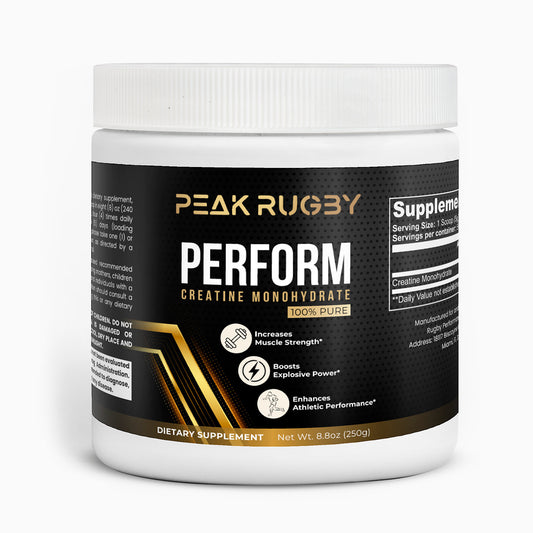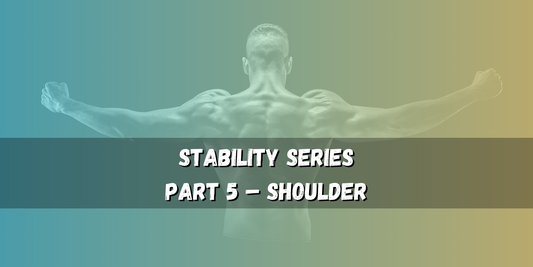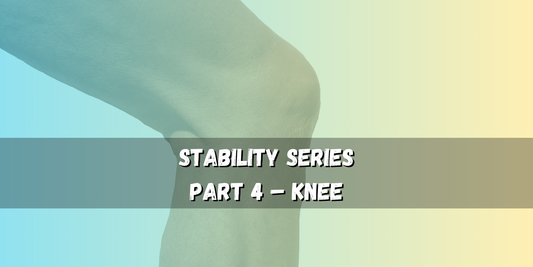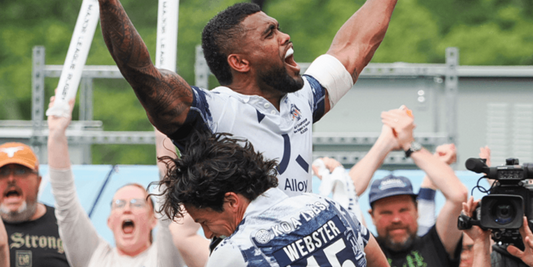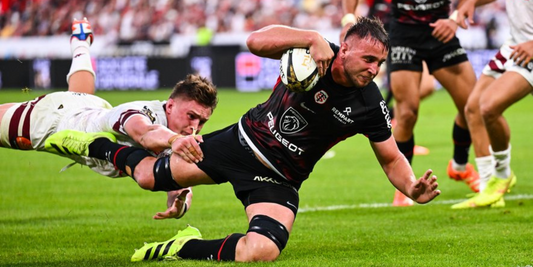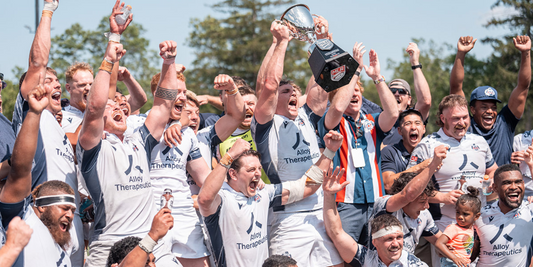If you want to run faster, hit harder, and stay solid through every tackle and sprint, you need to train your legs the right way.
This article breaks down how to build strong, powerful, and mobile legs specifically for rugby performance—with exercises that improve sprint speed, lower-body strength, and movement control.
You’ll also get access to a downloadable 5-day leg routine, complete with coaching cues, video links, and rugby-specific movement patterns you can plug straight into your weekly training.
Here’s how the series looks like:
- Part 1: How to Build a Strong Core for Rugby
- Part 2: How to Build Strong Legs for Rugby
- Part 3: How to Build Strong Shoulders for Rugby
- Part 4: How to Build a Strong Back for Rugby
- Part 5: How to Build a Strong Neck for Rugby
- Part 6: How to Build Strong Wrists and Grip for Rugby
- Part 7: How to Build Strength for Rugby
- Part 8: How to Build Power for Rugby
- Part 9: How to Build Speed for Rugby
Let’s move to your next foundation: your legs.
WHY LEG STRENGTH MATTERS IN RUGBY
Legs are the foundation of every rugby athlete. They’re the engine that powers forward movement, supports high-impact collisions, and drives success in everything from scrummaging and tackling to sprinting and sidestepping.
In rugby, strong legs:
- Provide the force behind scrums, mauls, and driving tackles
- Build the acceleration you need to burst off the line or break through the defense
- Help with directional control during cuts, steps, and evasive movement
- Support proper body positioning in contact situations
- Reduce injury risk by stabilizing knees, hips, and ankles under pressure
But it’s not just about lifting heavy—true leg development for rugby means building strength, power, mobility, balance, and stability across all planes of motion.
UNDERSTANDING LOWER BODY FUNCTION FOR RUGBY
Your lower body includes several key regions that work together to produce athletic movement:
1. Hips and Glutes
The hips are the powerhouse of athletic movement. Glutes are responsible for hip extension, stabilization, and explosive force. Weak glutes can lead to inefficient movement and increase the risk of hamstring and lower back injuries.
2. Hamstrings and Posterior Chain
The hamstrings and entire posterior chain play a vital role in deceleration, sprinting, and posture. They act as brakes and stabilizers—essential when landing from a jump or changing direction under pressure.
3. Quadriceps
Quads are responsible for knee extension and powerful leg drive. They’re key in sprinting, tackling, and especially important in controlling eccentric loading (like absorbing force when landing or stepping down).
4. Calves and Ankles
Lower leg strength helps absorb ground reaction forces and adds spring to your stride. Ankle mobility and calf strength are crucial for footwork, balance, and sprinting efficiency.
5. Adductors and Hip Rotators
Often neglected, these muscles contribute to lateral movement, lower body stability, and injury prevention—especially in groin and knee health.
RUGBY-SPECIFIC LEG DEMANDS
Unlike traditional gym-based leg training (which often focuses on aesthetics or pure strength), rugby demands functional lower body strength across various conditions:
- Unilateral strength for running, stepping, and staying balanced during tackles
- Explosiveness for sprints, jumps, and collisions
- Rotational and lateral strength for quick directional changes and side steps
- Joint stability to prevent injury during unpredictable contact or fatigue
- Durability to repeat high-intensity effort over the full 80 minutes
This means rugby players need to train legs with more intention than just heavy squats and leg presses.
THE TRAINING PROGRESSION
To build strong legs for rugby, your program should address multiple qualities:
1. Stability & Balance
Start by building coordination, balance, and single-leg control:
- Bulgarian split squats
- Single-leg RDLs
- Glute bridges and band walks
2. Strength & Mobility
Train through full ranges of motion with good mechanics:
- Deep goblet squats
- Cossack squats
- Step-downs
3. Power & Plyometrics
Once strength is established, add explosive movement:
- Jump squats and lunge jumps
- Broad jumps
- Split stance jumps
4. Sprint & Game-Transfer Movements
Include drills that reflect on-field patterns:
- Wall marches and sled pushes
- Bear crawls
- Monster walks and lateral lunges
Training should flow from stable → unstable, slow → fast, bilateral → unilateral, and general → specific over time.
KEY TAKEAWAY: LEG STRENGTH = RUGBY POWER
Leg training isn’t just about lifting heavy—it’s about becoming a complete rugby athlete. When you build your legs the right way, you gain more than muscle: you gain acceleration, control, and resilience. Strong, functional legs let you explode through contact, sprint with intent, and hold your ground under pressure.
If you skip this, you're leaving performance—and injury resistance—on the table.
GET YOUR FREE LEG TRAINING ROUTINE
Want a simple, effective leg routine you can plug into your training right away? Enter your email below to get your free copy. We’ll send it straight to your inbox.
This free PDF includes 5 rugby-specific leg training sets—each featuring 2 to 3 exercises you can easily add to your workouts as a warm-up or finisher. You’ll get:
- Clear exercise breakdowns
- Coaching cues and rep schemes
- Video links for each movement
- Routines designed to build strength, mobility, and power
Get started today and build the strong, powerful legs your game demands.
If you found this article helpful, don’t forget to:
- Like and share this post with your teammates and fellow rugby fans
- Bookmark the blog to stay updated on the next rounds
- Follow @gopeakrugby on X and Facebook and subscribe to our Youtube Channel for more rugby analysis, match recaps, and insights



